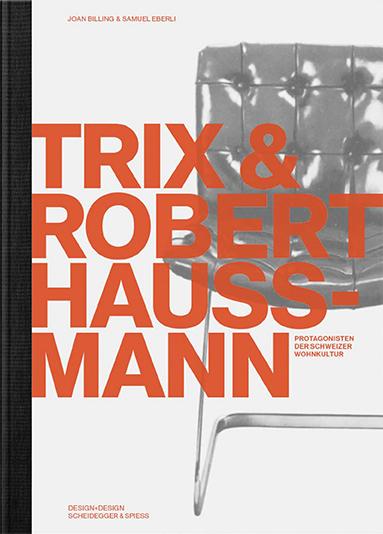
Trix und Robert Haussmann
German, Michael, Joan/Eberli Billing, Billing, Meret/Hanak, Samuel/Ernst, 2019

I don't blame Trix and Robert Haussmann for deceiving me. Because that's what the work of the two architects thrives on, using illusionistic design elements to turn my perception on its head. A current exhibition and a publication provide an insight into their early work.
Good books and museum visits are among the things that sweeten my grey days and help me get over the annual winter tristesse. Most recently, the exhibition "Trix and Robert Haussmann - Protagonists of Swiss Home Decor" brightened my mood. It is currently running at Löwenbräu Zurich and was curated by the Design+Design founders - trend researcher Joan Billing and architect Samuel Eberli.
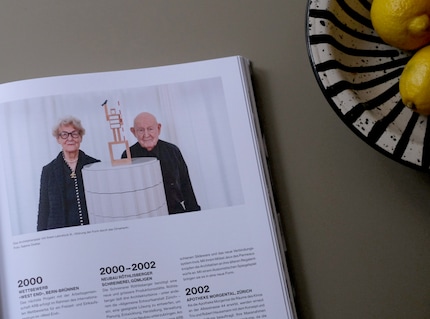
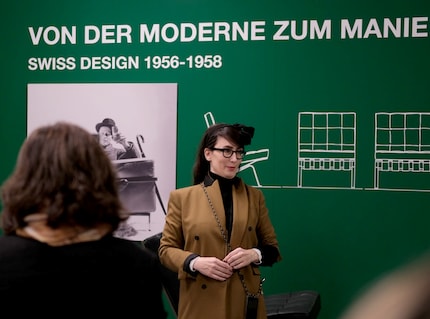
When I took part in Joan Billing's guided tour of the monographic exhibition, I realised that I had seen some of the architects' works before. I just hadn't realised that buildings like Zurich Central Station were by them. In 1987, Trix and Robert Haussmann designed the transport and retail spaces for the S-Bahn station on Museumstrasse in the newly created basement levels of the building, as well as their connections to the main hall on the ground floor.
Over the years, the couple have not only designed buildings such as boutiques and restaurants, but have also realised furniture designs. "Strangely enough, Trix and Robert Haussmann are better known internationally for their work than they are here in Switzerland," explains Joan as she tours the individual stages. "There are numerous projects in Zurich alone, including the Da Capo Car from 1979, which were designed by them."
The current exhibition at the Löwenbräu includes furniture and photos of Zurich's famous Kronenhalle Bar. It is a milestone in the work of the young Robert Haussmann and is characterised by glazing that plays with the guests' perception. Such illusionary effects are a typical stylistic device that runs through many of the creative couple's works. "In the Haussmanns' works, mirrors are not there for people to look at themselves. Rather, they are intended to enlarge spaces and confuse the viewer," says trend researcher Joan Billing.
The exhibits are complemented by furniture created by students from the Höhere Fachschule für Technik und Gestaltung HFTG in Zug. "We like to work with schools to teach young designers and architects about Swiss cultural heritage," says Joan. The students pick up on the Haussmanns' stylistic devices and reinterpret them.
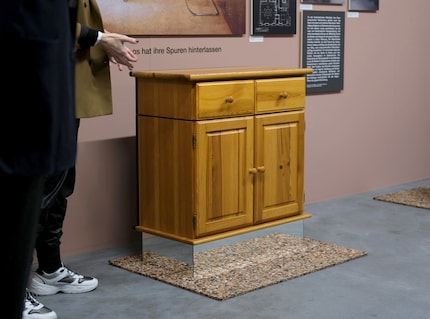
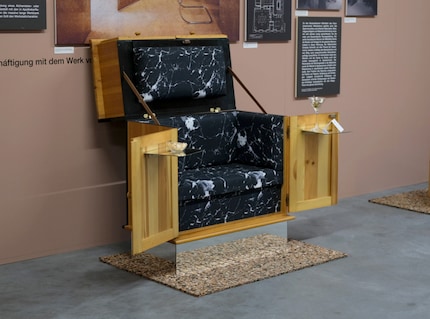
For example, a minibar has been created that is hidden behind a conventional chest of drawers. It appears to float thanks to the mirrored plinth. Or a chair that is reminiscent of the Thonet "Chair 214", yet is neither fish nor fowl: an integrated light turns the design into a lamp on the one hand. On the other hand, the light prevents the user from sitting down, turning the chair into an art object.
Although the exhibition is only on until 11 December, I can still be fooled by Trix and Robert Haussmann more often during the winter. Instead, I simply visit places designed by them and browse through the new Design+Design volume from the "Protagonists of Swiss home decor" series.

Trix und Robert Haussmann
German, Michael, Joan/Eberli Billing, Billing, Meret/Hanak, Samuel/Ernst, 2019
Follow me if you want to be informed about upcoming exhibitions - after all, winter and the list of exceptional design talent is still long.
Like a cheerleader, I love celebrating good design and bringing you closer to everything furniture- and interior design- related. I regularly curate simple yet sophisticated interior ideas, report on trends and interview creative minds about their work.
From the latest iPhone to the return of 80s fashion. The editorial team will help you make sense of it all.
Show all